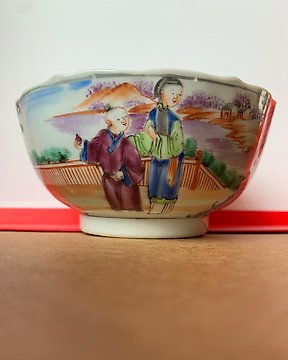
China - Dinastía Qing (1644-1911)
N.º 81770083

N.º 81770083

Martaban jars are common stoneware storage pots mainly found in Southeast Asia. In fact, they are called “Martaban” wares after the transit port of Marta ban in Burma, a common stop in the trade route travelled by the ships carrying this pottery. These vessels were originally used as storage jars for provisions such as oil, wine, fruits and pickles.
Martaban jars have been mentioned by travellers as early as the fourteenth century. Many of them can be dated to the Ming era. Today, they can be found at museums all over the world. A similar pair of jars is exhibited at the Creswick Museum, Victoria, Australia.
Loop handles through which a rope could be passed to secure a cover, are generally placed around the shoulder. These jars have a high neck and wide shoulders, brown-drip-glaze, unglazed base, 4 handles each.
The jars carry an intriguing series of surface marks and imperfections created while the clay was in the kiln.
The condition of both jars is excellent for their age.
W 33cm x D 33cm H 36cm, weight 4700g per jar, shipping can be organized by DHL courier.
Provenance:
Acquired 2022 in Cologne, Germany from bequest of Asian art collector, late Lothar Heubel, owner of a well-known chain of antiques, Asian art & interior design galleries, Germany. According to the widow, Ms. Helga Heubel, the vase was acquired in Hong Kong in the mid 1970s.
Cómo comprar en Catawiki
1. Descubre algo especial
2. Haz la puja más alta
3. Paga de manera segura